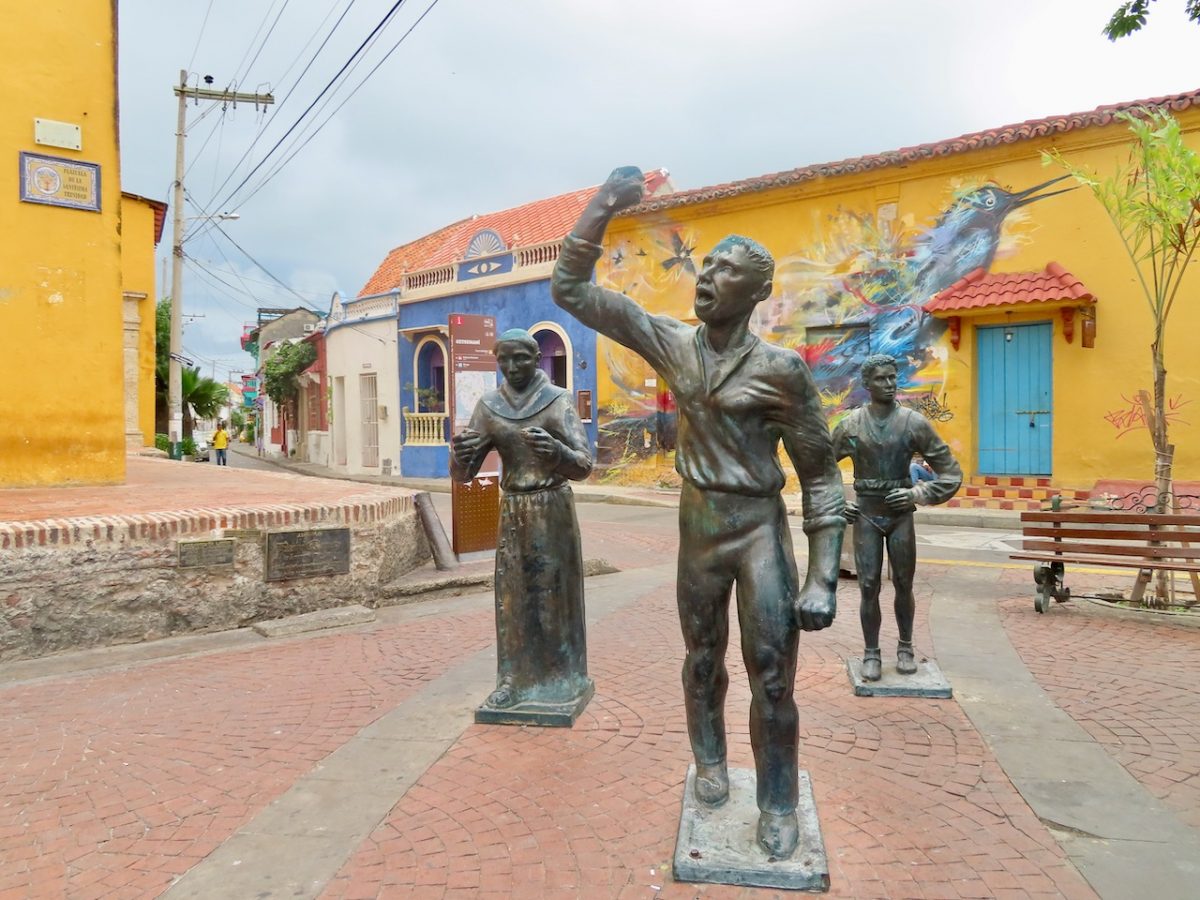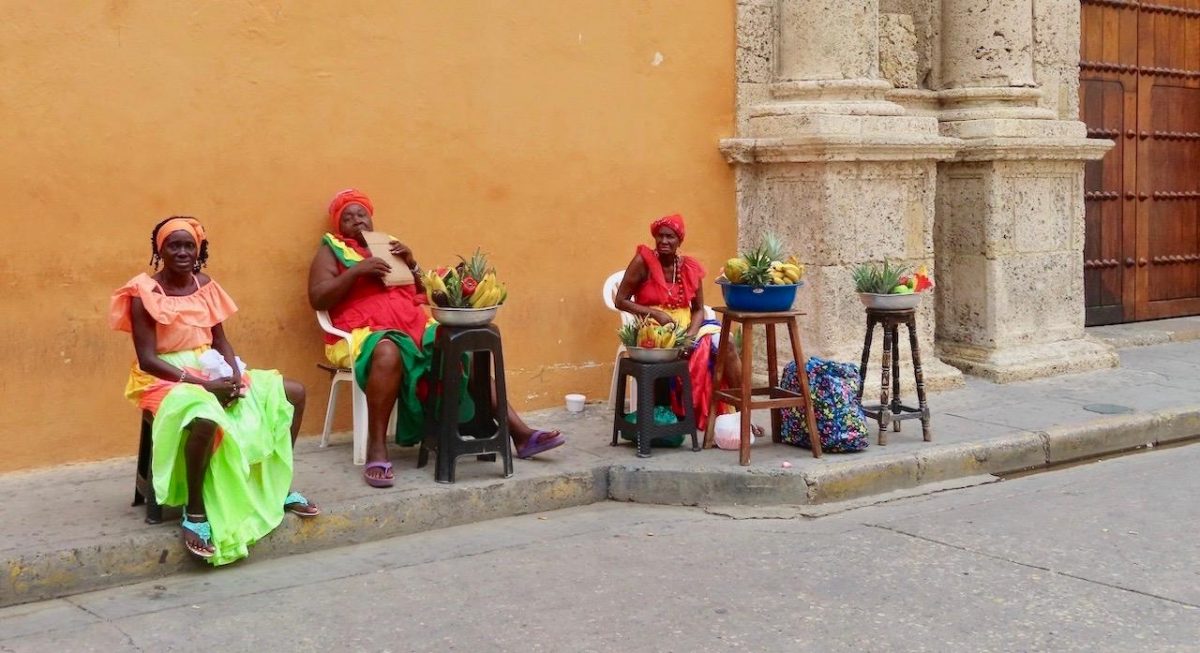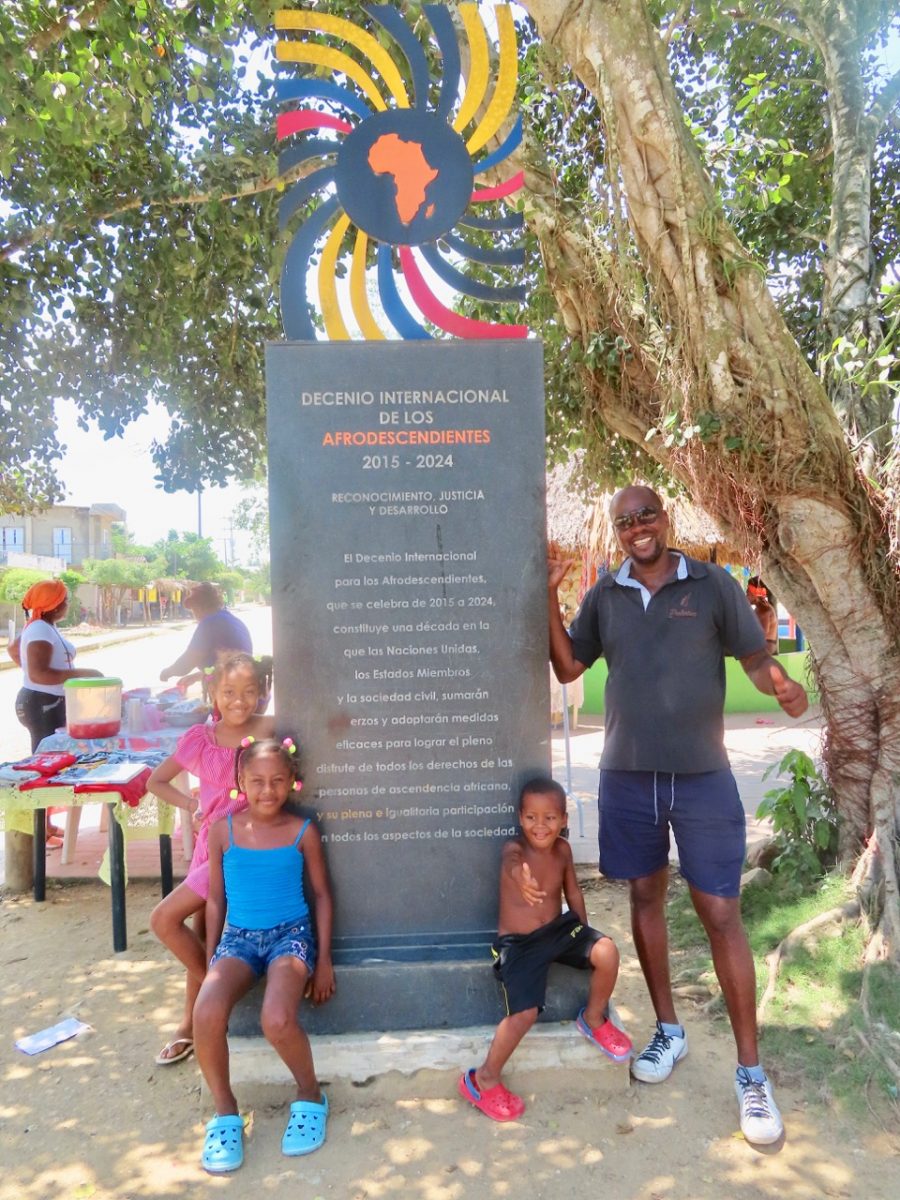For Cuisine Noir. Oct 2019.
Located on Colombia’s northern coast, overlooking the Caribbean Sea, the city of Cartagena is best known for its colorful buildings, historic monasteries, an active nightlife, and pristine beaches; reminiscent of Old San Juan, Old Havana and Miami.

Cartagena was the first Spanish colony on the South American continent and the first sanctuary for freed African slaves in the Americas. Evidence of Afro-Colombian history can be discovered on a guided walking tour of the walled city with Nicomedes Vergara Melendez (aka Nico) from Sion Tours. Melendez grew up not too far from here. Like most Colombians, he either knows everyone in town or gets to know them with his friendly attitude.
Melendez and I walk through the walled city on a warm afternoon. The area is divided into three neighborhoods: San Pedro with its Andalusian-style palaces; San Diego, where merchants and the middle-class lived; and Gethsemani, also known as the popular quarter. Every turn has something of interest to see: home of acclaimed author Gabriel García Márques, a pink opera theater, a narrow street covered with umbrellas and much more. Old renovated monasteries turned into boutique hotels, international restaurants, designer jewelry stores, and thought-provoking street art, make Cartagena a photographer’s paradise.
Preserving Afro-Colombian History
One of the must-see cathedrals in the walled city is Iglesia de San Pedro Claver built in honor of the priest St. Pedro Claver. Claver was the saint of the slaves and a human rights defender. Out in the square, you can see women dressed in colorful skirts carrying fruit baskets, posing for photos. These are the women of San Basilio de Palenque – the first free slave settlement in the Americas.

At Plaza de Los Coches, Melendez points to glass jars filled with goodies that look like meringue and peanut brittle. “After slavery was abolished in Colombia, many of the women started their own business – including making and selling homemade sweets and coconut macaroons known as cocadas,” Melendez informs.
The next day I travel inland with Isabella Sanchez, a young woman who was born and raised in Cartagena and runs her own translation company. We make our way through the city’s traffic towards country roads where there is nothing but forests and a few farms. San Basilio de Palenque is approximately 30 miles away in the foothills of the mountain range Montes de Maria, but it takes almost two hours to get there. The settlement was declared a Masterpiece of the Oral and Intangible Heritage of Humanity by UNESCO and noted by International Decade for People of African Descent, which focuses on the protection of the rights of people of African descent, recognizing their contributions and the preservation of their rich cultural heritage.
Founded in the 1600s by West African slaves who escaped Spanish oppression, the settlement attracts travelers who want to learn about African heritage. Sanchez herself has only been to Palenque once before, for a music concert. She is as curious to find out about the history, food and people.
Colombian Hospitality
In 1691, the Spanish crown issued a royal decree guaranteeing freedom to Africans in San Basilio de Palenque if they stopped welcoming new escapees. Due to its isolated location, the inhabitants were able to preserve their unique language, food and customs.
Palenque resident Danilo Casseres Cassiani offers guided tours starting at his home. In his modest living room, he talks about his ancestors’ bravery and proudly shows us the thick cookbook, “Cocina palenquera para el mundo,” a collection of authentic recipes put together by the local women which went on to win as one of the best cookbooks in the world (by the Gourmand World Cookbook Awards in Beijing).

We walk a couple of blocks on the dirt grounds that make up the town, stopping to see a statue of Benkos Biohó, the founding father of Palenque, the main square where kids play while adults sell souvenirs, and older men sit around chatting in makeshift bars listening to music blaring from speakers typically used for public events. We stop at Belleza La Reina del Kongo, a local hairdresser, to learn about different kinds of braiding techniques. Hairdos were very important for the slaves, not for fashion, but for mapping escape routes and carrying plant seeds.
Next, we are invited into the home of maestro Rafael Cassiani, a folkloric hero known for his songwriting and music composition based on champeta. Like American rap, champeta music and dance were historically associated with “creole therapy” for Afro-Colombians and rejected by wealthier socio-economic groups.
When we return, Cassiani’s niece fries whole fish in her outdoor kitchen and offers us a simple lunch of coconut rice and fish with tomato and onion sauce served on banana leaves. We eat with our hands and it is delicious.

In Cartagena, you can have a broad range of experiences, from staying at luxurious mansions in the walled city, sunbathing on the islands of Rosario and Playa Blanca and eating at world-class restaurants to stepping back in time in a remote village that has preserved its 500-year-old culture.
~ Written for & published by Cuisine Noir. All rights reserved.